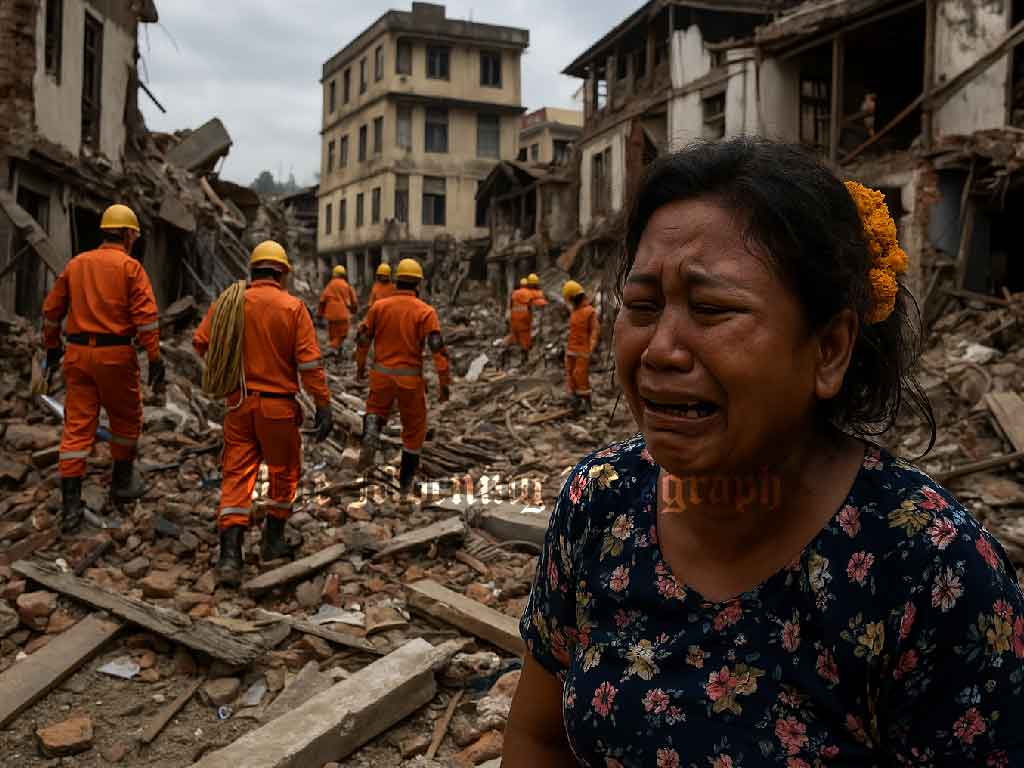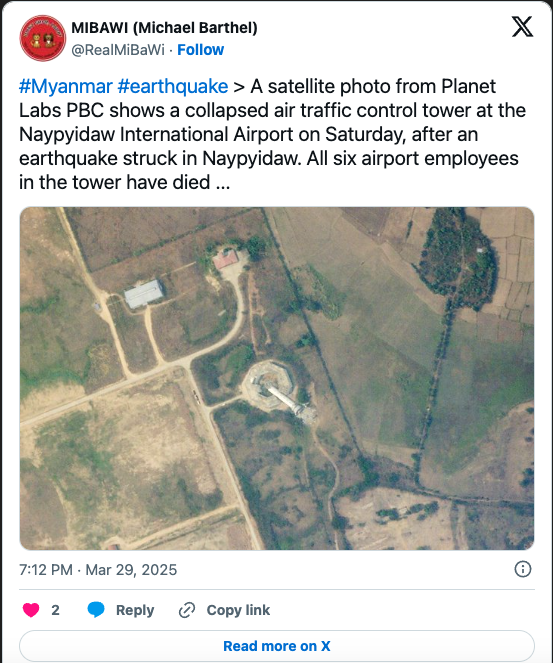
- Note that the image above was created by AI
A devastating 6.8 magnitude earthquake that struck Myanmar near Mandalay on Friday has claimed 1,644 lives and left more than 3,400 injured. The quake caused widespread destruction, including the collapse of vital infrastructure such as the air traffic control tower at Naypyitaw International Airport, effectively halting operations.
According to reports from the Associated Press, satellite imagery from Planet Labs PBC has revealed the extent of the damage. The images taken on Saturday show the air traffic control tower sheared off from its base, with debris scattered around its remains. The collapse disrupted all radar and electronic systems that were routed through the tower, paralyzing air traffic control at the airport.
A post on X by user MIBAWI confirmed the loss of life within the tower: “A satellite photo from Planet Labs PBC shows a collapsed air traffic control tower at Naypyidaw International Airport on Saturday, after an earthquake struck in Naypyidaw. All six airport employees in the tower have died …”

In response to the tragedy, India has initiated a humanitarian relief operation. Two Indian naval ships have already been dispatched to Myanmar, and additional ships are expected to follow. A field hospital, staffed by 118 personnel, is also scheduled to be airlifted from Agra later on Saturday.
Randhir Jaiswal, spokesperson for India’s Ministry of External Affairs (MEA), confirmed the efforts during a media briefing. He stated that India’s ambassador in Myanmar is currently stationed in Nay Pyi Taw to coordinate relief efforts. Jaiswal also noted that no casualties have been reported among the Indian community in Myanmar so far.
The MEA emphasized India’s longstanding commitment to being the first responder during regional disasters and emergencies. Jaiswal highlighted India’s recent assistance in the aftermath of Cyclone Yagi in Myanmar as an example of its ongoing support.
The disaster has left Myanmar reeling, with emergency responders working tirelessly to assist survivors and restore essential services. The international community continues to monitor the situation and mobilize resources for aid and recovery.




